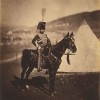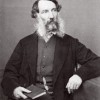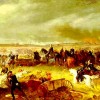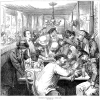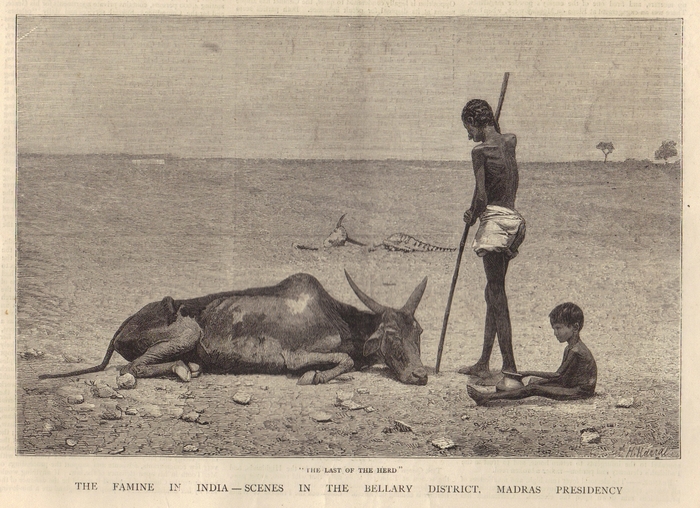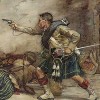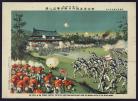Global Victorians Timeline
Created by Jessica Valdez on Thu, 09/09/2021 - 04:00
Part of Group:
Consult this timeline to help contextualize the material in the course. Also, feel free to add events that are missing.
Timeline
Chronological table
| Date | Event | Created by | Associated Places | |
|---|---|---|---|---|
| 1798 to 1801 |
Napoleon's Egyptian campaignThis campaign was claimed to defend French trade interests. After some initial success in land battles, the French troops were defeated at the Battle of the Nile by British fleet. Napoleon brought a group of scientists with him in his campaign. His group hence made the first modern scientific records on the pyramids, and the most ground-breaking one is the discovery of the Rossetta stone along the river Nile, a stela in three languages: Greek, Egyptian Hieroglyphs and a short-hand Egyptian script (Coptic) on the story of Cleopatra. This stone called for studies for scholars across Europe and the ancient Egyptian Hieroglyphic script was deciphered by a French scholar Jean Francois Champollion. |
Duyu Wang | ||
| 1800 |
The Act of Union of 1800The Act of Union of 1800 led to the merging of Great Britain and Ireland and resulted in the creation of the United Kingdom of Great Britain and Ireland. The union between Britain and Ireland was not smooth, as Ireland’s Christian values explicitly conflicted Britain’s Protestant values. Under this union, Ireland suffered a widespread famine. This contrasted with how Scotland and Britain’s union in 1700 was successful, as evidenced by the expansion of imperialistic conquests of the British Empire during the 1700s. In Scotland, as the Jacobites lost power, the Scottish viewed British nationalism as the embodiment of Protestant ideals, and the Scottish asserted that the Scottish Enlightenment played a pivotal role in the Glorious Revolution of 1688-1689, the union of Scotland and Britain seemed sensible and somewhat inevitable. In light of this contrast between Scotland’s and Ireland’s experiences of union with Britain, Britain’s sense of nationalism increased after the Act of Union of 1800, as Britain attempted to suppress the Catholicism of the Irish. This assertion of English Protestantism appears in Mill’s section on the influences of the continent and “especially from the St. Simonians,” whose school of thought brought “home to [Mill] a new mode of political thinking” (Mill 127). Mill notes that M. Comte, who developed much of the St. Simonians’ principles, posited that the “social science must be subject to the same three-stage law,” one of which includes viewing Protestantism as “the start of the metaphysical state and the doctrines of the French Revolution were its consummation” and that “its positive state was yet to come” (Mill 127). Here, Mill suggests that Protestantism is the driving force behind society’s progression and that Christianity is the “concluding phase of the theological state of the social science” (Mill 127). While Mill was not religious, he understands Protestantism through a historical lens and depicts it as an institution that paves the way for more freedom and the establishment of Enlightenment principles once its religious stage inevitably fades away. Moroever, Mill, who elsewhere underscores his Protestant ethic, suggests that Protestantism is a religion of an advanced post-French Revolution society while Catholicism is stagnant and outdated. These views align with the view toward Catholicism that Britain would have adopted to oppress the Irish. "Act of Union: The Creation of the United Kingdom." BBC, 27 February 2021, http://www.bbc.co.uk/history/british/empire_seapower/acts_of_union_01.sh... |
Rita Khouri | ||
| 1807 |
British slave trade outlawedSlave trade outlawed (but not slavery itself) |
Stacey Kikendall | ||
| 1823 |
Anti-Slavery SocietyMary Prince worked for the Anti-Slavery Society which was founded in 1823. At the time of its founding the slave trade was outlawed in Britian but slavery itself was not outlawed. The society and Mary Prince was integral in their work to outlaw slavery all together. Slavery was outlawed in 1833 unfortunatley the same year Mary Prince died. |
Brandon Walker | ||
| 1831 |
A History of Mary PrinceStory by Mary Prince, transcribed by Suzanna Strickland, edited by Thomas Pringle |
Stacey Kikendall | ||
| 1833 |
Slavery Abolition ActThe Slavery Abolition Act abolished slavery in most of the British Empire, and made the purchasing of slaves illegal. The act was passed by Parliament in 1833, received the Royal Assent, and went into effect in 1884. There had been many abolitionists in Britain since the TransAtlantic slave trade began about 100 years before, and there had been other acts passed to limit slavery, but not abolish it completley. One of the biggest advocacies for abolishing slavery was the Anti-Slavery Society, which was founded in 1823 in London. The act ultimately came to pass due to instability within the British government, and popular want for free trade. Once the act went into effect, about 800,000 slaves were freed in the Caribbean and South America. I have just been informed of the Slavery Abolition act and I dare say it is about time! The economy has suffered enough from this mistaken foray into the trans-atlantic trade. As soon as you get involved with foreigners, it only means trouble. As far as the slaves themselves, I suppose that is for the best as well. I know many to be involved in the Anti-Slavery Society and they are good men, so I presume it to be a worthy cause. I just hope this act restores the British Empire to its former glory. |
Sarah Henning | ||
| 1839 to 1842 |
The First Opium WarThe First Opium War was a chorological series of engagements between the United Kingdom and China. The initiation of this war between the super powers began when China attempted to step in a suppress the opium trade. This suppression lit a fire under the United Kingdom because the United Kingdom was participating in the illegal exportation of opium from India to China since the beginning of the 18th century. From this, the addiction rates in China skyrocketed causing China’s economy and social wellbeing to ultimately deplete at an exponentially fast rate. During the Spring of 1839, the Chinese government managed to seize copious amounts of opium from British traders. In 1840, United Kingdom decided to send a task force to Hong Kong China with orders to occupy and attack the city. The UK government continued these attacks for Chinese forces for an entire year. In 1842, the UK government and Chinese government decided to make amends and created the Treaty of Nanjing which ultimately ended the violent wars between the two super powers. The theme of drug addiction, specifically opium within The Tenant of Wildfell Hall is extremely prevalent. In several passages of the novel, Arthur Huntington is oftentimes described be addicted to opium in excess and the addiction is credited as one of his reasons of declination. Brontë, Anne, and Margaret Lane. The Tenant of Wildfell Hall ; Agnes Grey. Dent, 1980. “Opium Wars.” Encyclopædia Britannica, Encyclopædia Britannica, Inc., www.britannica.com/topic/Opium-Wars. |
Taylon Anderson | ||
| 1842 |
Treaty of Nanking (Nanjing)Under this treaty, the first of a series of so-called "unequal treaties" and the one which ended the First Opium War, Hong Kong was ceded in perpetuity to Britain. The Chinese were forced to allow Western trade, formerly restricted only to Canton (Gaunghzhou) at five "treaty ports": Canton, Shanghai, Amoy (Xiamen), Ningpo (Ningbo), and Foochowfoo (Fuzhou). |
Ross Forman | ||
| 1845 to 1852 |
Irish Potato FamineThe Irish Potato Famine, also known as the Great Hunger, began in 1845 and lasted until 1852. During this time, a late blight infestation spread rapidly throughout Ireland and ruined one-half of the potato crop in 1845 and about three-quarters of the potato crop over the following seven years. This infestation was particularly devastating for Ireland’s population overall because they relied heavily on potatoes as a main source of food, resulting in roughly one million deaths before the famine ended in 1852. Additionally, at least another million Irish were forced to leave the country as refugees, resulting in an even greater decline in Ireland’s population. After observing a series of costly, failed attempts by the British government to alleviate the Irish suffering, Mill saw the opportunity for a solution which he believed was “the only mode of combining relief to immediate destitution with permanent improvement of the social and economical condition of the Irish people” (Mill 178). He then advocated for this long-term solution to the Irish land question, which was based on major alterations in land tenure, for the remainder of his life. Sources: Irish Potato Famine. 17 Oct. 2017, www.history.com/topics/immigration/irish-potato-famine. Mill, John Stuart. Autobiography. Penguin Classics, 1989. Mokyr, Joel. Great Famine. www.britannica.com/event/Great-Famine-Irish-history. |
Jordan Taha | ||
| 16 Oct 1847 |
The Brontë Sisters and (1847) "Jane Eyre" by Charlotte BrontëPublished October 16th, 1847, Jane Eyre: An Autobiography or simply Jane Eyre is a novel written by Charlotte Brontë and published under the pen name "Currer Bell". Charlotte is one of three Brontë sisters along with Emily, the author of Wuthering Heights (1847) and Anne Brontë author of Agnes Grey (1847) and The Tenant of Wildfell Hall (1848). While not a true autobiograhy, Charlotte Brontë borrows from experiences and places in her own life to create the setting and plot of her novel, "Though the Rivers sisters mirror to some extent in an idealised fashion the home personas of the Brontë sisters, they are not to be confused with the real Emily and Anne" (Chitham). Due to Jane Eyre's popularity and positive critical reception upon release, it was used to compare extensively with Emily's novel Wuthering Heights. In fact, Charlotte points out in her Prefatory Essay for the 1850 Edition of Wuthering Heights that some critics believed both novels to be written by the same person, since all three Brontë sisters used similar pen names, "[Wuthering Heights] the identity of its author was misrepresented; it was said that this was an earlier and ruder attempt of the same pen which had produced Jane Eyre. Unjust and grievous error! We laughed at it at first, but I deeply lament it now" (Bronte pg. 337) Since then the Brontë sisters have repeatedly been compared to each other both in aspects of ther life and writing, but all three have distinguished themselves as novelists in their own right.
Brontë Charlotte. Wuthering Heights, by Brontë Emily and Beth Newman, Broadview Press, 2007.
Chitham, Edward. "Jane Eyre: Overview." Reference Guide to English Literature, edited by D. L. Kirkpatrick, 2nd ed., St. James Press, 1991. Gale Literature Resource Center, link.gale.com/apps/doc/H1420001069/LitRC?u=sand82993&sid=bookmark-LitRC&xid=2cb8f441. Accessed 1 June 2021.
|
Anthony Calvez | ||
| 1850 to 1864 |
Taiping RebellionOne of the deadliest conflicts in human history, this civil war in China during the Qing dynasty cost tens of millions of lives. It resulted in widespread famine and was a major "push" factor in Chinese emigration--often through coercive indentured labor schemes--to other parts of the world. It also involved a bizarre, millenarian cult, with a leader who claimed to be the brother of Jesus Christ. |
Ross Forman | ||
| 1 May 1851 to 15 Oct 1851 |
Great Exhibition
The Great Exhibition of 1851 was an event in the history of: exhibitions; world’s fairs; consumerism; imperialism; architecture; collections; things; glass and material culture in general; visual culture; attention and inattention; distraction. Its ostensible purposes, as stated by the organizing commission and various promoters, most notably Prince Albert, were chiefly to celebrate the industry and ingeniousness of various world cultures, primarily the British, and to inform and educate the public about the achievement, workmanship, science and industry that produced the numerous and multifarious objects and technologies on display. Designed by Joseph Paxton, the Crystal Palace (pictured above) was a structure of iron and glass conceptually derived from greenhouses and railway stations, but also resembling the shopping arcades of Paris and London. The Great Exhibition of the Works of Industry of All Nations became a model for World’s Fairs, by which invited nations showcased the best in manufacturing, design, and art, well into the twentieth century. ArticlesAudrey Jaffe, "On the Great Exhibition" Related ArticlesAviva Briefel, "On the 1886 Colonial and Indian Exhibition" Anne Helmreich, “On the Opening of the Crystal Palace at Sydenham, 1854″ Anne Clendinning, “On The British Empire Exhibition, 1924-25″ Barbara Leckie, “Prince Albert’s Exhibition Model Dwellings” Carol Senf, “‘The Fiddler of the Reels’: Hardy’s Reflection on the Past” |
Dave Rettenmaier | ||
| 2 Oct 1853 to 30 Mar 1856 |
Crimean War
ArticlesStefanie Markovits, "On the Crimean War and the Charge of the Light Brigade" |
Dave Rettenmaier | ||
| 10 May 1857 to 20 Jun 1858 |
Indian Uprising
ArticlesPriti Joshi, “1857; or, Can the Indian ‘Mutiny’ Be Fixed?” Related ArticlesJulie Codell, “On the Delhi Coronation Durbars, 1877, 1903, 1911″ |
Dave Rettenmaier | ||
| 1860 |
Expansion of Hong Kong to KowloonIn 1860, China ceded Kowloon Peninsula to Britain as part of the Convention of Peking ending the Secomd Opium War. |
Ross Forman | ||
| 11 Oct 1865 |
Morant Bay Rebellion
Articles |
Dave Rettenmaier | ||
| Dec 1865 |
“Jamaica Committee”
Articles |
Dave Rettenmaier | ||
| 14 Jun 1866 to 2 Aug 1866 |
Austro-Prussian War
ArticlesAlison Chapman, "On Il Risorgimento" Related ArticlesMarjorie Stone, “On the Post Office Espionage Scandal, 1844″ |
Dave Rettenmaier | ||
| Jul 1866 |
Permanent transatlantic cable establishedIn July 1866, in the aftermath of the Civil War, a permanent transatlantic cable was re-established after a failed attempt in 1858. Articles |
Dave Rettenmaier | ||
| Jun 1868 |
Edward John Eyre acquitted
Articles |
Dave Rettenmaier | ||
| 19 Jul 1870 to 10 May 1871 |
Franco-Prussian War
ArticlesAlison Chapman, "On Il Risorgimento" Related ArticlesMarjorie Stone, “On the Post Office Espionage Scandal, 1844″ |
Dave Rettenmaier | ||
| 1 Jun 1876 to 1 Jun 1878 |
Great Indian Famine of 1876–78[caption id="attachment_3198" align="aligncenter" width="700"] These estimates are taken from: Related Articles |
Dave Rettenmaier | ||
| Nov 1878 |
British invade Afghanistan
ArticlesZarena Aslami, “The Second Anglo-Afghan War, or The Return of the Uninvited” Related ArticlesAntoinette Burton, “On the First Anglo-Afghan War, 1839-42: Spectacle of Disaster” |
Dave Rettenmaier | ||
| Autumn 1899 to 7 Sep 1901 |
Boxer Rebellion (義和團運動)By the mid-19th century, Christianity spread and blossomed in China. Churches and Missionaries were all over the country, and this expansion casued conflicts with the local people. On a microscopic scale, this was seen by the Chinese as a bunch of Westerners spreading their Western degeneracy and eroding Chinese Culture. At the height of the hysteria, rumours were spread where these Westerners were scooping out children's eyeballs and collecting their semen for medicine. (The original term is "陽精" which means "male vitality") Despite the missionaries' attempts to build hospitals and schools for the locals, they are often ignored by the Chinese Locals. In 1868, a plague broke out in a French Monastery that led to the deaths of many babies. This event was seen by the locals as the French Missionaries killing said babies, which led to the public stoning of a French Minister. On a macroscopic scale, the Qing Dynasty was consistently losing their influence to neighbouring countries due to corruption and a failure to anticipate other countries. These repeated losses include: The Treaty of Nanking (南京條約) (1842), which gave Hong Kong Island to the British after the First Opium War; The Convention of Peking (北京條約) (1860), which gave the Kowloon Peninsula to the British and Outer Manchuria to the Russians after the Second Opium War; the Treaty of Aigun (璦琿條約) (1858), which ceded northern Manchuria to Russia; The Treaty of Tientsin (天津條約) (1858), which opened Chinese Ports to foreign trade and increased missionary activities to foreign countries; The Treaty of Bakan (馬關條約) (1895), which gave Taiwan to Japan. These are just part of the countless treaties where China was unable to defend itself towards foreign powers, but it is generally agreed by historians that the Treaty of Bakan was what ultimately pushed forward this movement. Around 1900, a group of people named The Yìhétuán (義和團) was established. They branded themselves as a martial arts cult and claimed that by repeating their mantras, followers would be "Impenetrable by blades"and "Unharmed by Cannons". This group of people were backed by the Empress Dowager Cixi at the time. Not only because this faux-populist movement can make the regime appear less like an accountable for any retaliations since it was "self-organized", but the club also changed their motto from "反清復明" (Abolish Qing Restore Ming) to "扶清滅洋" (Help Qing Defeat the West). This mantra helped perpetrate a reduction in friction between the ruling Manchurians and the ruled Han-Chinese, thereby strengthening Cixi's grasp on the country from Han Nationalists. After the repeated murders of foreign missionaries and Chinese Christians, the group ended up expanding their movement into Zhili (Modern day Hebei) and killed a German and a Japanese Embassy Staff Member. Cixi declared war against all these nations on June 15th 1900, which ultimately led to the Eight Nation Alliance between England, France, Germany, Russia, Japan, Austria-Hungary, Italy, and America. The battalion attacked China for its deeds and took over Beijing on August 15th. By October 26th, Cixi surrendered on behalf of China after escaping to Xi'an. The surrender led to the signing of the Boxer Protocol (辛丑條約) (1901), which led to war reparations and a Chinese exclusion zone withinin Beijing for security reasons: only Westerners can live within this zone in order to prevent another massacre. This ended up being one of the most disgraceful events under the Qing Dynasty. It caused much distrust towards the Manchurian Regime amongst the Chinese populace and an increased support in Sun Yat-sen's revolution. Academy of Chinese Studies. (一)列強不斷侵華與教案頻生: 中國文化研究院 - 燦爛的中國文明. chiculture.org.hk/tc/photo-story/1729. Romanization of Treaty names are taken from Wikipedia. |
Oscar Wong | ||
| 11 Oct 1899 to 31 May 1902 |
Second Boer War
ArticlesJo Briggs, “The Second Boer War, 1899-1902: Anti-Imperialism and European Visual Culture” |
Dave Rettenmaier |





